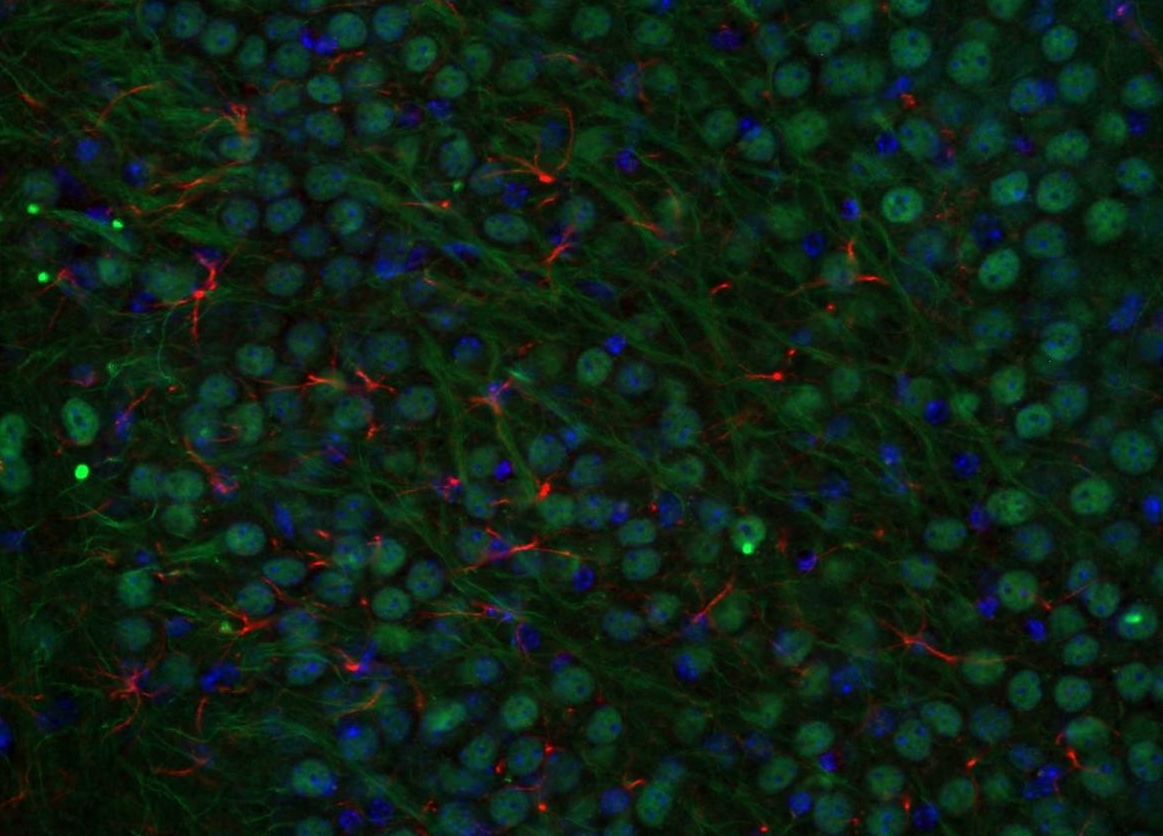Neuronal diseases in old age may be connected with inadequate protein degradation
Cellular properties are based on proteins, the synthesis, convolution, modification and degradation of which are subject to quality control. Aged proteins are detected, marked and disarmed through cellular »protein waste bins« (proteases). As we age, this endogenous quality control may become defective. This results in collections of proteins and protein fragments (peptides) on and in nerve cells. The aggregation of these peptides, for example, causes neurons to die off through apoptosis (one of the numerous variations of cell death) in Alzheimer’s disease. The normal degradation processes for proteins in the brain, such as pathological changes in the degradation components in old age and in case of neuronal diseases (neurodegeneration, neuronal tumours) are an important field of research processed by Prof. Dr. Ralf Stohwasser from the Chair of Biochemistry.
The main focus of interest here are the microglia. These are a component of the nerve tissue with special functions. Microglia are able to measure different functional statuses of the neurons and probably also of other neuroglia cell types. In this way, the microglia are able to influence pathological changes such as the consequences of a stroke, either by limiting the damage or by amplifying it. Therefore, the team of researchers headed by Prof. Stohwasser are initially concerning themselves with executing an inventory of the different components and activities of the proteolytic systems responsible for protein degradation in simple cell culture models (2D). It has already been established that, in normal conditions, »resting« microglia possess so-called standard proteasomes, whereas »activated« microglia possess immunoproteasomes with other protein-degrading properties. »We suspect that aging processes change the capacity and specific nature of such proteolytic systems, and might play a role in the generation of dementias«, explains Prof. Stohwasser. Due to targeted modulation of the microglia function, it might be possible to understand certain age-related neurological complaints better and to alleviate them.
Before getting this far, Prof. Stohwasser and his team wish to find out what exactly happens with neurons and glial cells during the aging process. For this purpose, age-related changes are simulated in a targeted manner through suitable stressors in order to see how the »protein waste bins« for the different cell types deal with age-related damage. This necessitates the production of three-dimensional (3D) cell culture models. These are required because they permit the simulation of molecular processes in tissue, and reduce dependency on animal experiment studies. In addition, pharmacological substances in 3D cell culture models can be tested with more informative value. »The 3D cultures are closer to the actual structure of nerve tissue than traditional 2D models. We hope in future to use 3D models to identify age-related malfunctions in glial cells more accurately. On the basis of this, pharmacists and physicians can in future develop targeted treatments or even new forms of prevention«, says Prof. Stohwasser with regard to the long-term perspectives for the project

